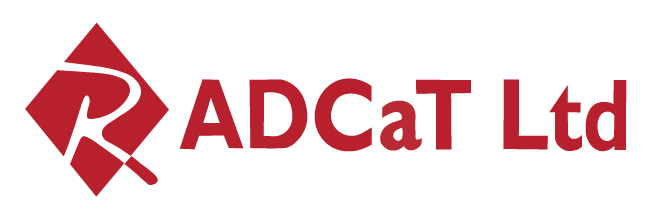DGSA DSEAR risk assessments are becoming vital in today’s changing safety landscape. Dangerous substances no longer move only on lorries, ships, or planes. They are stored in warehouses, used in factories, and integrated into complex processes. This shift means compliance does not stop at transport. It extends to every stage of handling, storage, and use.
Traditionally, a Dangerous Goods Safety Adviser (DGSA) focused on transport compliance. Their role kept businesses aligned with ADR regulations and reduced transport risks. But now, many advisers are expanding into DSEAR—Dangerous Substances and Explosive Atmospheres Regulations. This makes sense. The knowledge they already hold about hazardous materials directly applies to workplace safety assessments.
Why DGSA Skills Fit DSEAR
DSEAR places a clear duty on employers. They must identify, assess, and control risks linked to fire, explosion, or energetic incidents. These risks arise from flammable liquids, gases, combustible dusts, oxidising agents, and corrosives. DGSAs already know these materials well. They classify them, check Safety Data Sheets, and plan safe transport.
That knowledge transfers smoothly into fixed-site safety. A DGSA can evaluate how substances are stored, used, or generated in processes. They can also recognise ignition sources, review ventilation systems, and assess training needs. This ability makes DGSA DSEAR risk assessments highly effective.
The Link Between Transport and Workplace
A DGSA already understands the full lifecycle of hazardous substances. They see how materials are classified, labelled, stored, and moved. When they expand into DSEAR, they extend that oversight into the workplace. This creates a complete safety chain from logistics through to operational use.
Businesses benefit because gaps close. One adviser ensures compliance across transport and fixed sites. That reduces the chance of accidents, improves documentation, and strengthens audits. It also saves time and money because companies no longer need two separate consultants.
For more details on what DSEAR covers, you can visit the Health and Safety Executive’s official DSEAR guidance.
How DGSA Experience Supports DSEAR
DGSAs already work with structured processes. They assess hazards, plan controls, and guide compliance. That mirrors the DSEAR approach. For example, when classifying a transport risk, a DGSA checks ignition sources, fire controls, and emergency response. In DSEAR, they use the same mindset for static environments.
Their experience includes:
- Reviewing Safety Data Sheets for chemical properties.
- Advising on segregation and safe storage of dangerous goods.
- Identifying risks linked to transport and recommending controls.
This expertise helps them assess whether workplace systems are strong enough. They can check if equipment meets ATEX standards, if staff training is up to date, and if emergency procedures are realistic. Their transport background means they already think about real-world risks, not just theory.
Steps in DGSA DSEAR Risk Assessments
When conducting workplace assessments, a DGSA usually follows a structured path:
- Identify substances. Catalogue all dangerous goods used, stored, or created. Transport paperwork and Safety Data Sheets provide much of this data.
- Review workplace processes. Check where and how substances are stored, transferred, and used. Look at ignition risks, containment, and ventilation.
- Classify hazardous zones. For gases, vapours, and dusts, assign zones under ATEX guidance. This defines equipment standards and control levels.
- Evaluate controls. Assess whether current systems—like extraction, explosion protection, and training—are strong enough.
- Recommend improvements. Suggest safer substances, better containment, stronger systems, or improved training.
By using this method, DGSA DSEAR risk assessments provide practical, accurate, and clear guidance.
Why It Matters for Businesses
DSEAR compliance is not optional. It is a legal duty. But beyond the law, it saves lives and protects assets. Fires and explosions can destroy facilities, harm people, and ruin reputations. They also lead to heavy fines and downtime.
When businesses use advisers with both DGSA and DSEAR expertise, they gain complete coverage. They protect supply chains, workplaces, and people. They also create a stronger safety culture, where compliance runs through every stage of operations.
For organisations looking to strengthen their safety approach, this joined-up service is invaluable. You can also read more about related compliance support in our Radcat insights.
Growing the Adviser Role
For DGSAs, expanding into DSEAR assessments is also a professional step forward. It boosts credibility, widens consultancy offerings, and deepens client relationships. Training pathways exist through NEBOSH and specialist DSEAR assessor courses. The Health and Safety Executive also provides advanced training opportunities.
With strong foundations in hazardous substances, most advisers find the transition smooth. It builds on existing expertise and delivers more value to clients.
My Career Path into DSEAR
My own move into DSEAR assessments grew from early experience. I worked alongside my father, a respected DGSA who later specialised in explosive and flammable materials. I gained insight from his work with global innovators in safety technologies. That inspired me to expand my own qualifications.
I later trained at the HSE Buxton laboratories, where I observed controlled explosive tests. Seeing first-hand how substances behave under pressure gave me deep respect for risk assessment. It also highlighted the importance of strong communication when advising clients.
For me, moving into DSEAR was natural. It built on technical expertise and matched my drive to protect businesses and people. Today, DGSA DSEAR risk assessments form a key part of my professional work.
Final Thoughts
DGSA DSEAR risk assessments bring transport and workplace safety together. They create complete oversight of dangerous substances. They also strengthen compliance and reduce risks that could devastate a business.
For advisers, expanding into DSEAR is not just a career move. It is a way to add value, grow credibility, and help clients in more meaningful ways. For businesses, it is a way to secure stronger safety and compliance at every stage.
If you are tempted to step into this field, consider it carefully. It takes technical knowledge, clear judgement, and resourcefulness. But if you already work with dangerous goods, the path into DSEAR may be your next step.
